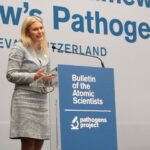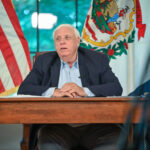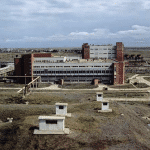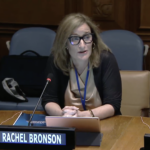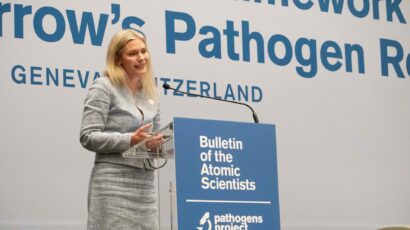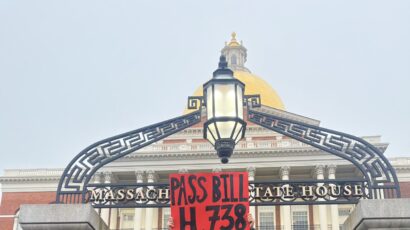Licensing life science researchers
By Laura H. Kahn | April 6, 2009
In a previous column, I discussed how the recent U.S. buildup of high-containment biodefense laboratories might inadvertently increase the risk of another bioterrorist attack by increasing the number of researchers who have expertise and access to dangerous pathogens. One response to this risk has been to oversee research facilities and monitor the acquisition of microbes. An additional strategy that has yet to take hold in the scientific community is the possibility of a national licensure program for researchers handling the pathogens.
In the United States, pilots, physicians, nurses, clinical laboratory technicians, and even cosmetologists must receive specialized education and training and pass federal or state licensing examinations in order to practice their respective professions. Licensure ensures the public that these professionals meet a certain level of competence, and it allows the government to keep records of who these professionals are and where they practice.
The public depends on the competence and benevolence of life science researchers just as much as they do with pilots, physicians, and nurses.”
For example, the Federal Aviation Administration (FAA) licenses pilots at levels such as student, recreational, private, and commercial depending on an individual’s knowledge, skill, and training. Pilots have to go to flight school and log a certain number of hours to qualify. And they also must pass both practical and written tests. The FAA keeps records of all licensed pilots across the nation.
Unlike pilots who get federal licenses, physicians get state licenses. To qualify for state licensure, physicians must attend an accredited medical school, pass three U.S. medical licensing examinations given at three different points in training, and complete one year of post-graduate training.
Note: Board certification is separate from licensure. A physician who is board certified in a specialty such as cardiology, gastroenterology, or cardiothoracic surgery must complete additional years of training and take a written and practical examination given by the certifying board. These boards are administered by the professional organization of that specialty. They indicate a level of expertise in a subject–not a level of competence by the state license. Many of them now require recertification after 7 to 10 years in order to keep up with the latest advances.
If physicians want to be able to prescribe controlled substances such as narcotics, then they have to apply to the Drug Enforcement Agency for a DEA number. The DEA has a list of narcotics ranging from Schedule I to V, and physicians must indicate which schedules of narcotics they want privileges to prescribe. So, for instance, anesthesiologists would want to be able to prescribe a broader range of Schedule I to V narcotics than pediatricians. Some states such as New Jersey require additional registration for physicians to prescribe narcotics. Even with these restrictions, however, thousands of people are injured and hundreds die as a result of inappropriate prescriptions or use of narcotics.
While licensing has historically focused on professional competency, some states are moving it into the security realm by requiring that all licensed physicians get fingerprinted and undergo criminal background checks in order to maintain their medical licenses. (For example, I had to get fingerprinted to maintain my New Jersey medical license.)
So far, federal biodefense oversight has focused on the pathogens rather than on the people working with them. For instance, the Centers for Disease Control and Prevention (CDC) administers the National Select Agent Registry, which requires the registration of government, academic, and commercial laboratories that possess, use, or transfer dangerous biological agents and toxins. (The CDC focuses on agents that affect people while the Agriculture Department’s Animal and Plant Health Inspection Service runs a separate agricultural select agent registry that oversees the agents that pose potential threats to plants and animals.) These registries were developed in response to the 2002 Public Health Security and Bioterrorism Preparedness Response Act, and the final Select Agent Regulations were published in March 2005 in the Federal Register.
From the beginning, there were problems with the lists. Researchers questioned the inclusion of some pathogens on the select agent list. Specifically, researchers from the University of California, San Diego School of Medicine questioned the need to include the fungus Coccidoides immitis, which is freely available in the environment, on the list. Infection from this fungus in most people is mild, self-limited, and not contagious, and its potential use as a weapon is extremely limited.
Other researchers from Yeshiva University’s Albert Einstein College of Medicine questioned the process by which pathogens were chosen to be on the select agent list. The microbes on the list have no common characteristic, such as virulence or pathogenicity, that ties them together. For example, smallpox and plague are on the list–but not HIV, which is a lethal virus that has devastated a number of societies.
Another problem with the select agent list is that it can jeopardize research during a natural-occurring public health crisis since labs must have stringent security measures in order to work on select agents. When the SARS epidemic emerged in 2003, an international group of 13 researchers urged the U.S. government not to list the virus as a select agent because doing so would place severe restrictions on the research and potentially slow the response and possibly delay vaccine and drug development.
Ultimately, the U.S. government decided to keep SARS off the select agent list during the 2003 epidemic. As a result, scientists were able to send and work with specimens across international borders without select agent restrictions. This level of collaboration and cooperation probably couldn’t have been achieved if SARS had been a select agent. Today, the virus remains off the select agent list.
Current proposals to license researchers could certainly be adapted from the licensing models described earlier. As part of a life scientist licensure process, students working on their masters or doctorate degrees in the life sciences should receive education and training in how to work safely in laboratories and on the potential dangers of dual-use research. They should learn what to do when test tubes break and they inadvertently expose themselves to pathogens. If licensure requirements followed the pilot model, then students would be eligible to receive a student laboratory license. If licensing followed the physician model, then students would take examinations at the end of certain periods in their training to be eligible to receive a license at the end of their education and training. Further building on the pilot model, licenses could correspond to a biosafety level (BSL). A researcher who wanted to work in a high containment BSL-4 laboratory would have to undergo additional education and training to qualify for a BSL-4 license. Alternatively, if the physician model were used, then licensed researchers who wanted to work with dangerous pathogens would have to apply to the CDC for a select agent number analogous to the DEA number assigned to physicians.
To address biosecurity, students should learn about dual-use issues. As some states have started to fingerprint physicians, this could be an option–albeit a controversial one–to consider for scientists.
There are arguments against licensure. Some researchers feel that licensure would discourage graduate students and post-docs from pursuing research careers. Arturo Casadevall at the Albert Einstein College of Medicine has stated, “It is already difficult to attract good people to work with select agents. Licensure would just add paperwork and more friction to a system that is sinking under current regulations.” He further argues that there’s no evidence that licensing would prevent nefarious use. Indeed, pilot licensure didn’t prevent 9/11. One could argue, though, that intelligence information concerning the pilots was available, but governmental failures allowed the attacks to proceed.
The bottom line is that the public depends on researchers’ competence and benevolence just as much as they do with pilots, physicians, nurses, and other professionals. Licensure could certainly address the issue of biosafety by requiring certain levels of competence when working in a laboratory. Whether or not it could address biosecurity by preventing nefarious use of pathogens is another matter.
Together, we make the world safer.
The Bulletin elevates expert voices above the noise. But as an independent nonprofit organization, our operations depend on the support of readers like you. Help us continue to deliver quality journalism that holds leaders accountable. Your support of our work at any level is important. In return, we promise our coverage will be understandable, influential, vigilant, solution-oriented, and fair-minded. Together we can make a difference.
Topics: Biosecurity, Columnists


